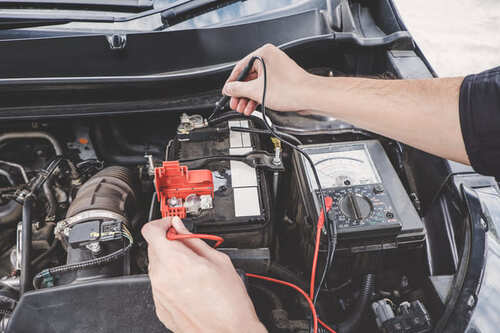Has your Vauxhall Insignia been acting up lately? This guide will help you to spot the signs of common problems early and learn how to solve them.
Manual gearbox problems
If you’re struggling to shift between gears, it could be due to a variety of causes. For example, shifting difficulties at higher speeds typically indicate that the centre clutch plate is faulty. It may be possible to fix it by removing and dismantling the gearbox and re-greasing the components to prevent them from getting stuck. It is generally recommended to leave this to the professionals rather than attempting it yourself. Another likely cause is a Vauxhall Insignia transmission fluid leak or worn clutch.
Some Vauxhall Insignia owners also report a scraping or grinding sound coming from underneath the vehicle along with a stiff gearstick. This could be caused by a range of issues, such as a worn synchroniser, damaged gears, insufficient lubrication, a ‘dragging clutch’ or a bad hub sleeve. A sticky gearstick can also be the result of corroded cables.
Issues related to the dual mass flywheel
This model can be prone to problems concerning the DMF. Common complaints include excessive vibrations, and a juddering, slipping or noisy clutch as a result of flywheel failure. You may also experience hesitation during acceleration. Professional repairs can be expensive, particularly if you have to replace the entire DMF unit. Replacement costs typically range between £750 and £1,500.
DPF problems

Diesel models use a diesel particulate filter (DPF) to trap soot particles from the exhaust in order to reduce emissions. To prevent the soot from building up and clogging the filter, it undergoes a regeneration process, where soot and dirt particles are burned off. However, if you’re primarily doing short journeys at slower speeds, the system is unlikely to complete the regen process.
If your DPF warning light comes on and doesn’t go away after driving at around 50 to 60 mph for about 20 minutes, you may need a new Vauxhall Insignia DPF or to get it cleaned professionally. A professional replacement can cost anything between £750 and £3,000 with labour costs included.
Turbo problems
While this is less common, some people notice that when driving at high speeds, the engine gets abnormally noisy and the vehicle starts to vibrate. This can actually be caused by a faulty turbocharger control solenoid valve. This can lead to surges of boost pressure and overboost, as well as pressure losses. A loud whining noise coming from the engine bay could also be an indicator of turbo failure
Tyre pressure sensor problems
A malfunctioning tyre pressure monitoring sensor or TPMS for Vauxhall Insignia could trigger a false warning on the dashboard. A TPMS is supposed to warn you when your Vauxhall Insignia’s tyres are deflated or the tyre air pressure is outside of the recommended values. The sensors are usually located inside the tyres or tyre valve, however, indirect systems use a sensor inside the wheel - normally the ABS sensor.
Malfunctions usually occur as a result of physical damage or corrosion. You can find compatible replacement parts at affordable prices in the Vauxhall Insignia accessories and parts catalogue.
Coolant leaks
This is a common fault for the 2011 Vauxhall Insignia with a 2.0 litre CDTI engine. Symptoms of a coolant leak typically include a distinctive sweet smell from outside the car, low coolant levels, steam under the bonnet, a wet engine bay and pools of brightly coloured fluid under the vehicle when parked.
In many cases, the leak detected was coming from the EGR vacuum cooler housing, which can get damaged under certain conditions. If you’re unable to identify the cause of a coolant leak, it is better to get a proper diagnosis before attempting to fix it.
EGR valve problems
This car part regulates the amount of nitrogen oxide the car emits by redirecting exhaust gases back into the engine cylinders. Sometimes a buildup of deposits causes the valve to get jammed open or shut or it loses vacuum due to damage or poor sealing. If it stays open all of the time allowing gases to continuously enter the engine, you’ll likely see an increase in fuel consumption due to improper combustion.
If it stays shut, it’s possible that the combustion temperatures will get too high, causing a knocking or pinging sound.Other potential performance issues include rough idling, stalling and hesitation.
Battery problems

Like any model, over time, the battery can deteriorate and start to lose its charge quicker. Symptoms include slow engine cranking or difficulties starting the car, flickering or dim headlights, corrosion at the battery terminals, a warped or bulging battery case and other electrical problems. Bad habits, such as leaving the lights on when the car is parked, or a failing alternator, could also cause the battery to keep losing charge.
When installing a new Vauxhall Insignia battery yourself, you can protect the terminals against corrosion by applying a small amount of dielectric grease.
A rattling engine
This is one of the more common but straightforward engine problems for this model. On 1.8 litre petrol Insignia cars, the engine has been known to rattle while driving. The culprit is usually a faulty or loose bracket on the air box. Replacing or tightening the bracket should resolve the issue.
Top products related to this topic:




















































